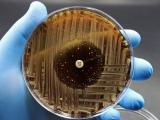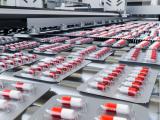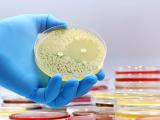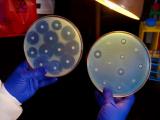Researchers at the National Institute of Standards and Technology (NIST) have developed a potential new strategy for detecting antibiotic susceptibility that could produce results in a fraction of the time needed for conventional tests.
In a study today in Scientific Reports, the researchers describe the experimental approach, which involves coating a quartz-crystal resonator with bacterial cells and then measuring the change in cell-generated frequency noise when the bacteria are exposed to antibiotics. In experiments on Escherichia coli bacteria exposed to ampicillin and polymyxin B, the researchers found that frequency noise dropped within 7 and 15 minutes, respectively, of the antibiotics being introduced.
Antibiotic susceptibility results that can produce results that quickly would be a significant improvement over conventional, culture-based antibiotic susceptibility testing methods, which involve observing the growth of bacterial colonies in the presence of antibiotics. These tests typically take at least 2 days to produce results, and in bacterial infections that require empiric antibiotic treatment, that could potentially mean 2 days of ineffective treatment if the bacteria is resistant to the drug that's been prescribed.
Infectious disease experts believe that rapid susceptibility tests, along with point-of-care tests that distinguish between bacterial and viral infections, could provide more appropriate treatment, reduce the use of broad-spectrum antibiotics, and slow the development of antibiotic resistance.
Measuring frequency noise
The technique, the researchers say, takes advantage of the high sensitivity of quartz-crystal resonators to movement on their surfaces. Previous research on the resonators has demonstrated their ability to measure changes in mass of thin films and adhered nanoparticles or cells. They theorized that measuring the frequency noise of the fluctuations caused by the mechanical motion of bacteria, and how the noise and fluctuations change when antibiotics are introduced, could be a new way to use these resonators.
In the proof-of concept experiment, the researchers placed E coli cells in lysogeny broth (a growth medium) on a crystal resonator sandwiched between two electrodes, one of which provided an alternating voltage at a stable frequency to stimulate crystal vibrations. The other electrode recorded oscillating voltages of the crystal response, a signal that shows fluctuations in the frequency noise emanating from the mechanical activity of bacteria on the crystal. The noise levels from the resonator increased when the bacterial cells were introduced, and increased as the cell populations grew.
On a second resonator, the researchers then tested the effect of an antibiotic on the cells, comparing the noise levels when polymyxin B was added to the crystal resonator to the noise level on the control resonator. Within 7 minutes of polymyxin B being introduced, they found that the frequency noise dropped close to zero. When they added ampicillin, the frequency noise began to decrease within 15 minutes, then dropped more rapidly as cells broke apart. Imaging and plating results from the experiments with the two antibiotics indicated that the decreases in the frequency noise were linked with cell death.
"The measurement approach presented here offers the potential of broad applicability to sensing efficacy of antibiotics through their effects on mechanical cellular activity," the authors write. But further assessment of the approach, with other bacterial species and other types of antibiotics, will be needed, they add.
See also:
Sep 22 Sci Rep study
Sep 22 NIST news release
























